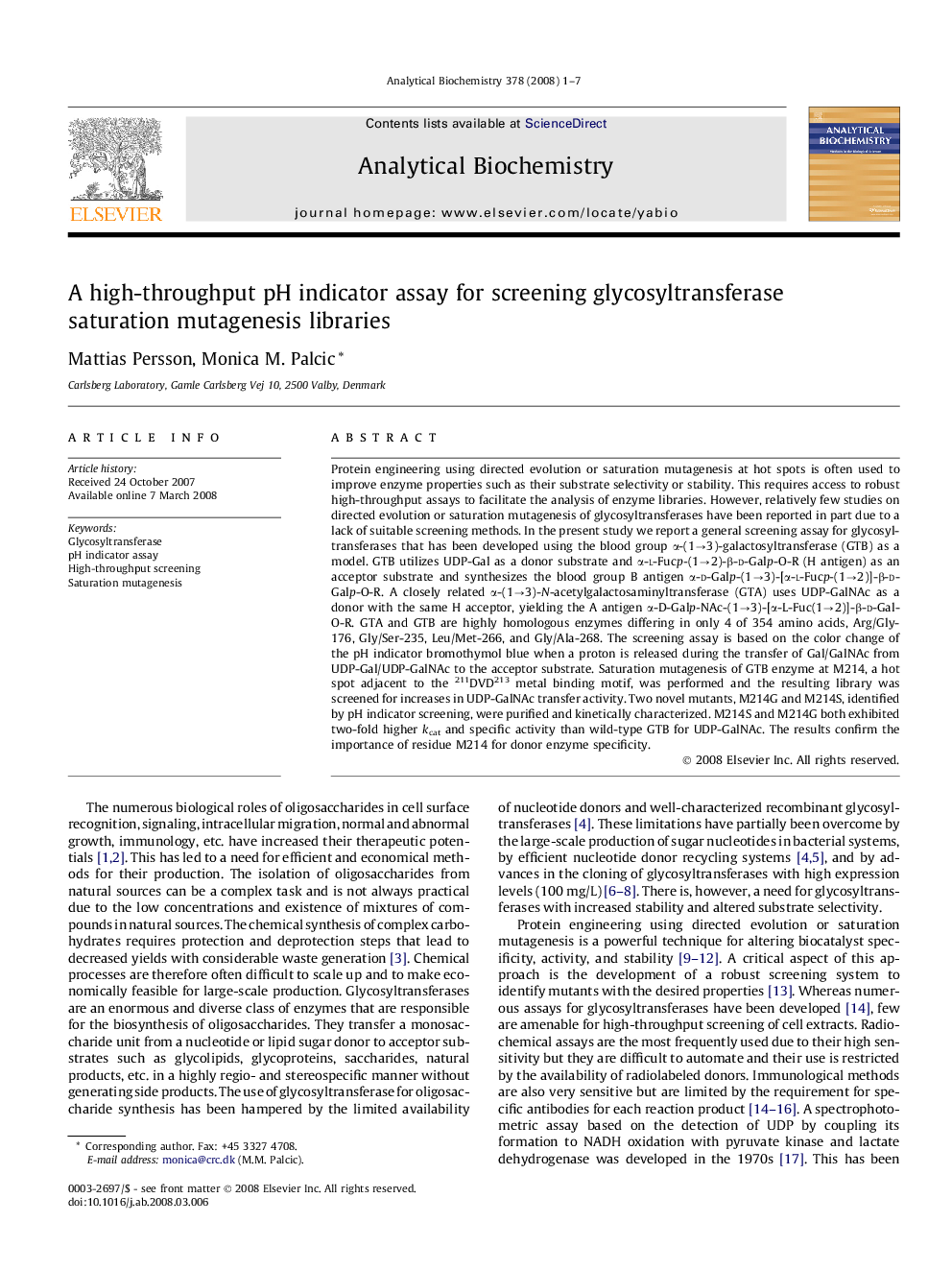| Article ID | Journal | Published Year | Pages | File Type |
|---|---|---|---|---|
| 1174742 | Analytical Biochemistry | 2008 | 7 Pages |
Protein engineering using directed evolution or saturation mutagenesis at hot spots is often used to improve enzyme properties such as their substrate selectivity or stability. This requires access to robust high-throughput assays to facilitate the analysis of enzyme libraries. However, relatively few studies on directed evolution or saturation mutagenesis of glycosyltransferases have been reported in part due to a lack of suitable screening methods. In the present study we report a general screening assay for glycosyltransferases that has been developed using the blood group α-(1→3)-galactosyltransferase (GTB) as a model. GTB utilizes UDP-Gal as a donor substrate and α-L-Fucp-(1→2)-β-D-Galp-O-R (H antigen) as an acceptor substrate and synthesizes the blood group B antigen α-D-Galp-(1→3)-[α-L-Fucp-(1→2)]-β-D-Galp-O-R. A closely related α-(1→3)-N-acetylgalactosaminyltransferase (GTA) uses UDP-GalNAc as a donor with the same H acceptor, yielding the A antigen α-D-Galp-NAc-(1→3)-[α-L-Fuc(1→2)]-β-D-Gal-O-R. GTA and GTB are highly homologous enzymes differing in only 4 of 354 amino acids, Arg/Gly-176, Gly/Ser-235, Leu/Met-266, and Gly/Ala-268. The screening assay is based on the color change of the pH indicator bromothymol blue when a proton is released during the transfer of Gal/GalNAc from UDP-Gal/UDP-GalNAc to the acceptor substrate. Saturation mutagenesis of GTB enzyme at M214, a hot spot adjacent to the 211DVD213 metal binding motif, was performed and the resulting library was screened for increases in UDP-GalNAc transfer activity. Two novel mutants, M214G and M214S, identified by pH indicator screening, were purified and kinetically characterized. M214S and M214G both exhibited two-fold higher kcat and specific activity than wild-type GTB for UDP-GalNAc. The results confirm the importance of residue M214 for donor enzyme specificity.
